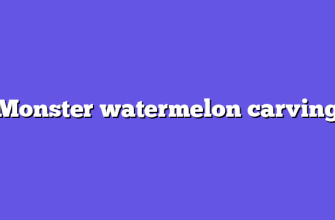Inuit carvings are a unique form of art that has been practiced by the Inuit people of the Arctic for centuries. These carvings are made from a variety of materials, including stone, bone, ivory, and antler, and depict a wide range of subjects, from animals to spiritual figures. Inuit carvings are highly sought after by collectors and museums around the world, and are a testament to the skill and creativity of the Inuit people.
Exploring the History and Meaning Behind Inuit Carvings
The Inuit people have a long and rich history of carving beautiful and meaningful sculptures from stone, bone, and ivory. These carvings are a reflection of the Inuit culture and their connection to the land and the animals that inhabit it.
The Inuit have been carving for centuries, and their carvings are a testament to their skill and creativity. The carvings often depict animals, such as whales, seals, and polar bears, as well as scenes from everyday life. These carvings are not only beautiful, but they also tell stories about the Inuit people and their relationship with the land.
The Inuit believe that the carvings are imbued with spiritual power. They believe that the carvings can bring good luck and protection to the people who own them. The carvings are also believed to be a way to communicate with the spirit world.
The Inuit carvings are a reminder of the Inuit people’s connection to the land and the animals that inhabit it. They are a reminder of the Inuit’s respect for nature and their appreciation for the beauty of the land. The carvings are a way for the Inuit to express their culture and their connection to the land.
The Inuit carvings are a beautiful reminder of the Inuit people’s history and culture. They are a reminder of the Inuit’s connection to the land and the animals that inhabit it. They are a reminder of the Inuit’s respect for nature and their appreciation for the beauty of the land. The carvings are a way for the Inuit to express their culture and their connection to the land.
The Artistic Process of Inuit Carving
The Inuit people of the Arctic have a long and proud history of carving. From the earliest days of their culture, Inuit carvers have used the materials around them to create beautiful and meaningful works of art.
The process of Inuit carving begins with the selection of the material. Traditionally, Inuit carvers used stone, bone, and ivory to create their works of art. Today, many Inuit carvers also use wood, antler, and other materials. Once the material is chosen, the carver begins to shape it. Using a variety of tools, the carver carefully carves the material into the desired shape.

The next step in the process is to add detail to the carving. This is done by carefully etching and carving the material to create intricate patterns and designs. The carver may also use paint or other materials to add color and texture to the carving.
The final step in the process is to finish the carving. This is done by polishing the material to give it a smooth and glossy finish. The carver may also add a protective coating to the carving to help preserve it for years to come.
Inuit carving is an art form that has been passed down through generations. It is a unique and beautiful way to express the culture and traditions of the Inuit people. The process of Inuit carving is a creative and joyful experience that brings beauty and meaning to the lives of those who practice it.
The Role of Inuit Carvings in Contemporary Art
Inuit carvings have been a part of the Canadian art scene for centuries, and their influence is still felt in contemporary art today. From the intricate and detailed sculptures of the Inuit people to the bold and vibrant paintings of modern artists, Inuit carvings have been a source of inspiration for many.
Inuit carvings are often characterized by their intricate details and bold lines. The carvings often depict animals, such as whales, seals, and polar bears, as well as scenes from everyday life. The carvings are often made from stone, bone, and antler, and the details are often highlighted with bright colors. The carvings are often seen as a representation of the Inuit culture and their connection to the land.
Inuit carvings have been a source of inspiration for many contemporary artists. From the bold lines and intricate details of the carvings, to the bright colors and vivid scenes, many modern artists have been inspired by the carvings to create their own works of art. From abstract paintings to sculptures, Inuit carvings have been a source of inspiration for many modern artists.
Inuit carvings are a reminder of the beauty and culture of the Inuit people, and their influence can still be seen in contemporary art today. From the intricate details of the carvings to the bold lines and bright colors, Inuit carvings have been a source of inspiration for many modern artists. Whether it’s a painting, sculpture, or installation, Inuit carvings have been a source of inspiration for many contemporary artists, and their influence can still be seen in the art of today.
The Impact of Inuit Carvings on Canadian Culture
The Inuit carvings of Canada have had a profound impact on the culture of the country. These carvings, which are made from stone, bone, antler, and ivory, are a unique form of art that has been passed down through generations of Inuit people.
The carvings are a representation of the Inuit culture and their way of life. They depict animals, people, and spiritual figures, and are often used to tell stories and express emotions. The carvings are a way for the Inuit to connect with their past and to share their culture with others.
The impact of Inuit carvings on Canadian culture is evident in many aspects of the country. For example, the carvings are often used as decorations in homes and businesses, and they are also featured in museums and galleries. The carvings are also used to create jewelry, clothing, and other items.
Inuit carvings have also had an impact on the Canadian art scene. Many artists have been inspired by the carvings and have used them as a source of inspiration for their own work. The carvings have also been used to create sculptures, paintings, and other forms of art.
The impact of Inuit carvings on Canadian culture is undeniable. They are a unique form of art that has been passed down through generations of Inuit people. They are a representation of the Inuit culture and their way of life, and they have had a profound impact on the culture of the country. The carvings are a source of inspiration for many artists, and they are also used to create jewelry, clothing, and other items. The impact of Inuit carvings on Canadian culture is undeniable, and it is something that will continue to be appreciated for many years to come.
The Different Types of Inuit Carvings and Their Significance
Inuit carvings are a beautiful and meaningful form of art that has been practiced by the Inuit people for centuries. These carvings are made from a variety of materials, including stone, bone, ivory, and antler, and each type of carving has its own unique significance.
The most common type of Inuit carving is the soapstone carving. These carvings are made from a soft, easily carved stone that is found in abundance in the Arctic regions. The Inuit people use these carvings to tell stories, express their beliefs, and honor their ancestors. They often depict animals, such as whales, polar bears, and seals, as well as spiritual figures and symbols.
Bone carvings are another type of Inuit carving. These carvings are made from the bones of animals, such as caribou, walrus, and whales. The Inuit people use these carvings to tell stories, express their beliefs, and honor their ancestors. They often depict animals, such as whales, polar bears, and seals, as well as spiritual figures and symbols.

Ivory carvings are also popular among the Inuit people. These carvings are made from the tusks of walruses and narwhals. The Inuit people use these carvings to tell stories, express their beliefs, and honor their ancestors. They often depict animals, such as whales, polar bears, and seals, as well as spiritual figures and symbols.
Finally, antler carvings are another type of Inuit carving. These carvings are made from the antlers of caribou and deer. The Inuit people use these carvings to tell stories, express their beliefs, and honor their ancestors. They often depict animals, such as whales, polar bears, and seals, as well as spiritual figures and symbols.
Inuit carvings are a beautiful and meaningful form of art that has been practiced by the Inuit people for centuries. Each type of carving has its own unique significance, and they all tell stories, express beliefs, and honor ancestors. Whether you’re looking for a unique gift or a beautiful piece of art to add to your home, Inuit carvings are sure to bring joy and meaning to your life.
Conclusion
Inuit carvings are a unique and beautiful form of art that has been passed down through generations of Inuit people. They are a representation of the Inuit culture and their way of life, and are a reminder of the importance of preserving their culture and traditions. Inuit carvings are a beautiful way to honor the Inuit people and their culture, and to appreciate the beauty of their art.








